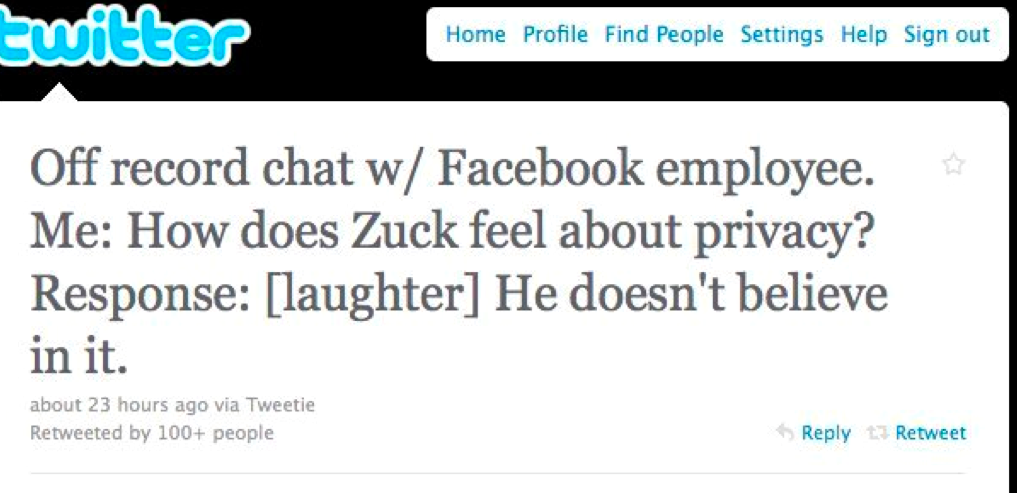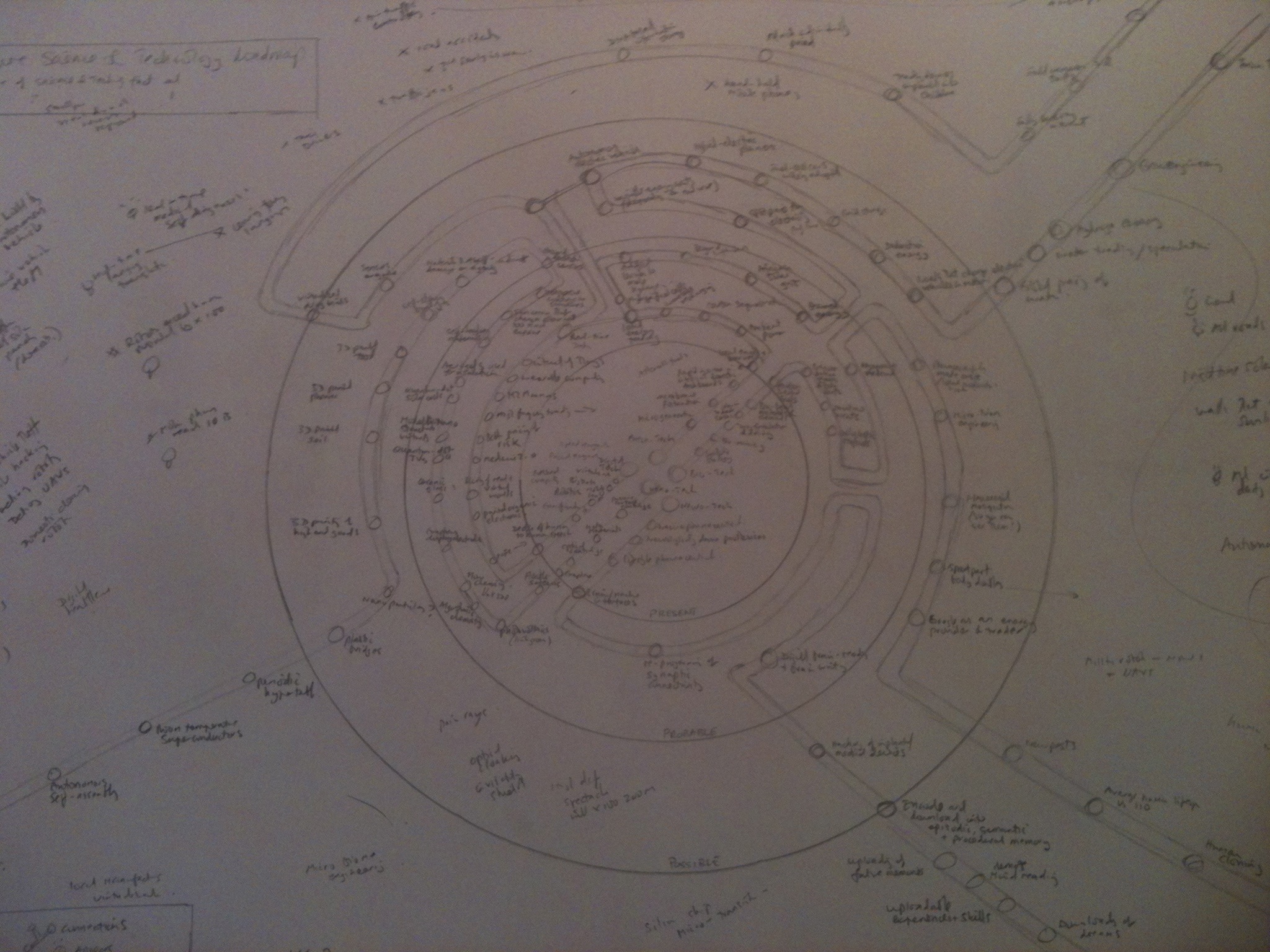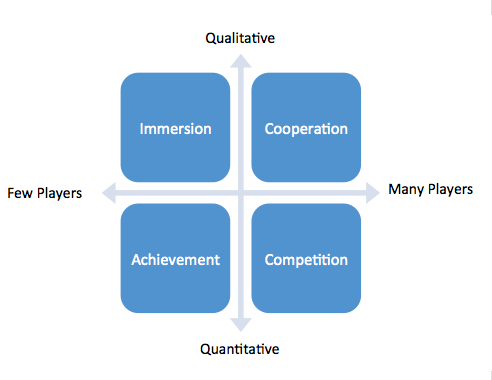
We are currently living in the Technolithic, an age that forms part of the most significant revolution since the agricultural and industrial eras. The Technolithic is part of the information age, but what we are now creating is perhaps not what the early internet pioneers envisaged. In the early days, the internet was about finding information. It is currently largely about finding other people. One day, I hope, it will be about finding ourselves.
But before this can happen we have to deal with a very powerful force, a force that wants to know absolutely everything about us. This force can act for the common good, but can also operate to profit the few.
Who we are and what we are allowed to be, is at the very heart of this. Please don’t get me wrong. I am not calling on you to smash your computers or stop using LinkedIn. All I am asking you to do is to raise your gaze from your freshly picked Apples and Blackberries and to pay closer attention to some of the possible consequences of using these devices, especially the way in which machines and the people that control them appear to be profiting from something that not only belongs to us but defines us.
Digital connectivity has given us many wonderful things and improved our lives immeasurably. At the moment the balance is positive, but that doesn’t mean that we shouldn’t remain vigilant.
I was in Poland last year doing a TEDx talk and met one of the developers behind an app called Life Circle. This is an app that makes blood donation more effective by opening up the communication lines between blood banks and blood donors. This might sound mundane, but it isn’t. It’s a matter of life in death in some instances. Simply allowing a blood centre to have a users smartphone number means that they can see where their donors are in near real time.
This allows the blood bank to call in certain blood groups if there’s an emergency. It can work anywhere – from Warsaw to Washington – and users can link with social networks and potentially recruit more donors. Moreover, once linked you could potentially ‘game’ blood donation, although the idea of competing with others to see who can give the most blood would obviously be a very bad idea.
Another medical marvel is Google Flu Trends. If you don’t know about it already, it’s an early example of Big Data and near real-time prediction. The story is that some people had a feeling that there must be a correlation between outbreaks of flu in particular regions and search terms used in the same locations. If one could predict the right words you could catch an outbreak sooner.
200,000 people are hospitalised annually in the US alone due to flu and between 20,000 and 30,000 die, but until recently it took the Centre for Disease Control around a week to publish flu data.
The Big Data connection here, by the way, is that Google did not know which handful of search terms would correlate, so it just ran half a billion calculations to find out, and it turned out that 45 search terms were indeed related. What is going on here, and is starting to occur elsewhere too, is that rather than sampling small data sets we are able to look at huge amounts of data, sometimes at all the data in near-real-time, which can reveal correlations that were previously deeply hidden or totally unobservable.
In other words, many aspects of our daily existence that were previously closed, hidden or private are becoming much more open, transparent and public and much of this data has huge value and forms a wholly new asset class.
The website 23andme.com recently got into trouble in the US with the FDA because it was thought by some that the site, and the results of the tests that were being offered, was carrying too much weight and users were acting in ways that were not necessarily in their best interests. In other words, users were seeing probabilities or predictions as certainties.
Again, if you don’t know about this, the site essentially offers to quickly sequence your genome for around $99. A decade or so ago, this would have cost you around a billion dollars. The results might strongly suggest, for example, that a 25-year-old man would have issues with his heart when he was in his 50s or that a 15-year old girl had a significant chance of developing breast cancer.
There are clearly privacy issues galore around new technologies such as these – should your new employer have access to information that you are 70% certain to die in 20 years for example?
Another, more mundane, example of companies looking at people and predicting future outcomes is McDonald’s. They, along with many other fast food chains in the US, have started to use technology to predict what you are about to order – and start to prepare your meal before you have actually ordered anything.
How and why do they do this? In the US about 50% of fast food turnover is through the drive-thru window and customers can become stressed if the queue moves too slowly. CCTV cameras are therefore pointed at cars in the queue and these cameras are connected to software that works out what each car is, not based on individual number plates, but on the silhouette of each car.
This knowledge is then married to millions of bits of historical data about what the drivers of such cars tend to order and, hey presto, predictive sales and marketing. The general idea, I guess, is that if you are driving a 10-year-old Volvo station wagon you’ve probably got a mother and at least one happy meal coming up, whereas if you can see a brand new Hummer you are not about to sell a small salad and a bottle of water.
Is McDonald’s technology intrusive? Does it invade privacy? I don’t think so. If they are stealing anything it isn’t anything of great value. Moreover, you can mess with their minds by riding a bicycle into the drive-thru and ordering two Big Macs and three cokes.
There are many other examples of machines attempting to know us and predict our behaviour. One is called the Malicious Intent Detector and it’s used primarily in airports in the US. This machine also uses cameras connected to software.
The idea here is that body-language can tell us quite a lot about what people are thinking or, more usefully, what they are thinking of doing. Our facial expressions, our eye movements, our clothes, what we are doing with our hands all betray certain things about us.
Indeed as much as 90% of communication is believed to be non-verbal. Combine this thought with skin temperature analysis (sensed remotely), facial recognition, x-rays and software that looks at how our clothes are fitting and you have a fairly good way of finding out whether someone is carrying something they shouldn’t or is intent on doing something that they shouldn’t.
But we can take things further still. Predictive policing is a direct result of better data and better analysis of crime figures. What it is able to do, with astonishing accuracy, is predict not only where, but when crime will take place. If this sounds like the Department of Future Crime in the film Minority Report that’s more or less the idea. It doesn’t identify criminals directly, but does pinpoint potential targets down to 150 square metres on specific days in some cases.
But that’s just the beginning potentially. If one adds developments in remote brain reading we could possibly have a situation where even our inner thoughts are intercepted. The asymmetry of this situation – and indeed of Big Data generally – shifts the balance of power between the state and the individual so we should keep a careful watch on this.
I’ve had my Identity stolen twice, but the benefits of digital transactions still outweigh any negatives. However, if someone were to steal not only my date of birth, address and bank account details, but everything about me, I’d view this rather differently.
Let’s put it like this. If someone came up to you on the street and asked you for personal information would you give it to them? And what if they asked about your daily schedule, your friends, your work, your favourite shops, restaurants and holiday spots?
How about if they wanted to know which books you read, what kinds of meals you like, how much sleep you get and what you searched for online in the privacy of your own home? Would you find that a little unsettling? Would you at least ask why this person wanted this information? And what if they said that they wanted to sell this information, your information, onto someone else that you’d never met. Would you allow it?
This is essentially what’s going on right now with social networks, although I believe it’s about to get far worse. Part of the problem is the mobile phone, although the word ‘phone’ is rather misleading. After all, using a phone to speak to someone is dying out globally. Voice traffic is falling through the floor, while text based communication is going through the roof.
These phones, and there are more than 6 billion + of them now, are broadcasting information about us all of the time, especially if they are smart phones, which increasingly they are. In fact smart phones have been outselling PCs globally since about 2012. In the UK, almost 10% of five year olds now own a mobile phone and by ten-years-of-age, it’s 75%. Eventually, all of these will be smart phones.
Our mobile phones are actually a form of wearable computing and I’d expect wearables to explode over the coming years. I don’t simply mean more people owning more phones, but more people carrying devices that continually broadcast information about us, and this would includes clothing embedded with computers, shoes containing computers, digital wallets and even toothbrushes containing computers. This is broadly the internet of things and it where the problems will really start.
An internet connected toothbrush might seem trivial, ridiculous even, but trust me they are coming. To begin with they will be seen as expensive toys. You’ll be able to download your brushing history or compete with your friends in various dental games. They will form part of the self-tracking or quantified-self movement and will be bought alongside Nike Fuel bands and sleep monitors.
Nothing wrong with this unless your toothbrush data finds its way into the wrong hands. For example, what if dental care was to be refused – or made vastly more expensive – if you had not reached level 3 of the tooth fairy game?
Currently there are roughly 12 billion things connected by the internet. By 2045 some people think this number will be 7 trillion. This means computers and wireless connectivity in every man-made object on earth and a few natural objects too.
Trees with their own IP address? It’s totally possible. And don’t forget that we put ID chips in our cats and dogs so its probably only a matter of time before we start chipping our children too.
Anyway, the point here is that almost everything we do and almost everything we own in the future, will emit data and this data will be very valuable to someone. I rather hope that this someone is us and that we can opt in and out at will, earning micro-payments for the data relating to our activities if that’s what we want.
And this brings me to why privacy is one of the biggest problems in our new electronic age. At the heart of Internet culture is a force that wants to find out everything about you. And once it has found out everything about you and 7 billion others, that’s a remarkable asset, and other people will be tempted to trade and do commerce with that asset.
Does this matter?
I think it matters for three key reasons.
First, people can be harmed if there is no restriction on access to personal information. Medical records, psychological tests, school records, financial details, sites visited on the internet all hold intimate details of a person’s life and the public revelation or sharing of such information can leave a person vulnerable to abuse.
Second, privacy is fundamental to human identity. Personal information is, on one level, the basis of the person. To lose control of one’s personal information is in some measure to lose control of one’s life and one’s dignity. Without some degree of privacy, for example, friendship, intimacy and trust are all lost or, at the very least, meaningless.
Third, and most importantly of all perhaps, privacy is linked to freedom, especially the freedom to think and act as we like so long as our activities do not harm others.
If individuals know that their actions and inclinations are constantly being observed, commented upon and potentially criticized, they will find it much harder to do things that deviate from accepted norms. There does not even have to be an explicit threat. Visibility itself is a powerful way of enforcing norms.
This, to some extent, is what’s starting to happening already with every intimate photograph, and every indelicate tweet being attributable to source, whether the source wants it to be or not.
As Viktor Mayer-Schonberger has pointed out, the possession of data about used to mean an understanding of the past. But, increasingly, the possession of data is starting to mean an ability to predict and control the future.
In the right hands this knowledge will be a tool for great good. But we should remain vigilant, because in the wrong hands this knowledge will be used against us, either to control us or to profit from us in a manner that destroys us as autonomous human beings.








